Quick Reference
between: 1924 - 1934
Harrison Keach Farm
Charlemont Road
Buckland, MA
Oil on Canvas
Unknown
Unknown
Unknown
Unknown
Unknown
NA
Featured Artwork: Spring Comes to the Keach Farm
RSW's Diary Comments
None.
Additional Notes
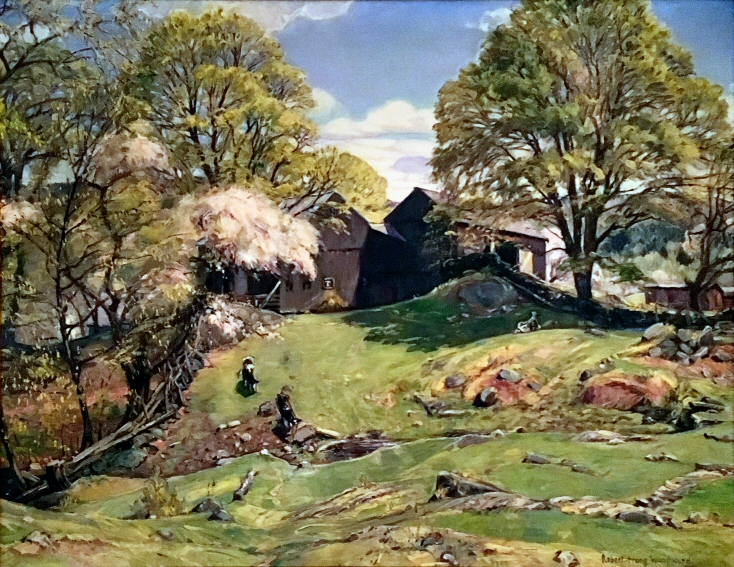
 From a May Pasture, 1934
From a May Pasture, 1934
This scene is a favorite of Woodward's. It shows the
rough terrain behind what Woodward called the "Twin
Barns". There are at least 3 barns on the property along
with many sheds. See- New England in November below.
The Harrison Keach farm off the road to Charlemont, MA from the Buckland Common was one of Woodward's favorite subjects between 1924 and 1934. Aside from the farm's age and weather-worn barns and buildings seemingly scatter-shot about the property from a number of different decades, it was formidable topography of the landscape itself. The Farm appears as if it is hanging on for dear life to the side side the hill for which it sits. The drama of its improbability is most likely what draws Woodward's attention. But it is also the charm of resiliance of the Keach family themselves."
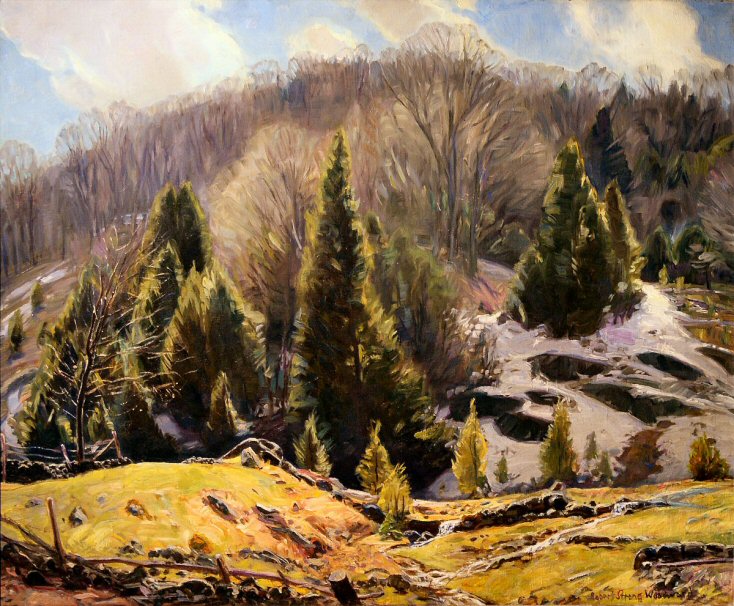
 Between Winter and Spring, 1938
Between Winter and Spring, 1938
Getting a better sense of the terrain. This painting
shows a rare look of the continuation of the hillside
above the farm. It is the only painting with no buildings.
What makes the Keach farm and the family living there especially unique to Woodward's catalog is that he also painted a series of interiors from inside the family's home just to illustrate how close and intimate he got with them. We have no other instance of Woodward making interiors, aside from his own Still Lifes and Window Picture paintings of his own studios, Hiram and Southwick.
Remarks on the Keach's made by friend, Helen Patch, from a series of letters to the Deerfeild Academy's American Studies Group:
" ...there was of run-down "shiftless" family named Keach, I think; Rob painted their kitchen-stoop:- an incredible mess of mops, pails, broken steps-- weathered and unpainted. The picture was uproariously funny in our sense but revealed also the tragedy of broken, unfulfilled, and hopeless lives."
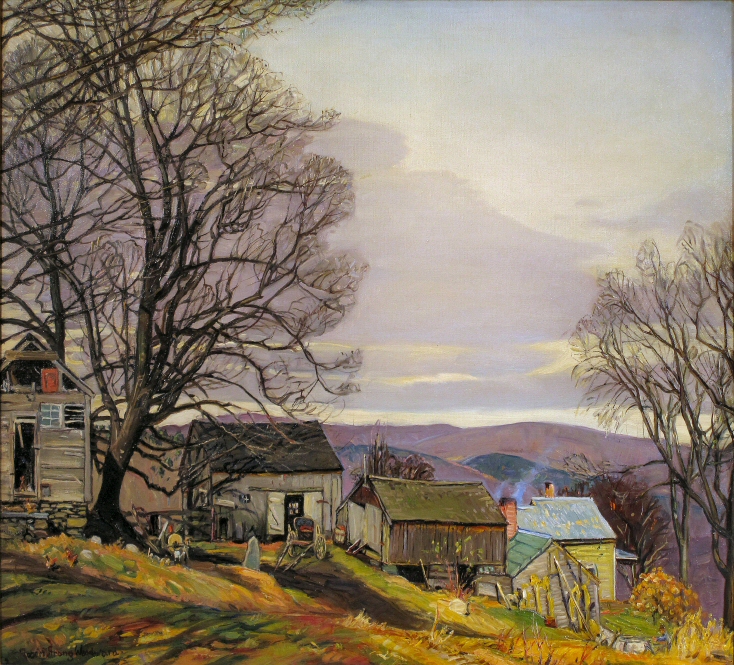
 New England in November, 1933
New England in November, 1933
shows a rare look of the continuation of the hillside
Now this painting really shows the landscape of the
farm and just how high up it is. The hills in the distance
are Purinton Hill and Johnson hill looking north.
Editor's Note (BCM):
Ms. Patch suggested in her letters that we note Woodward's "ironic sense of humor." giving her take on the Keaches as an example. Unfortunately, though she offers great insights, she could not be more wrong about Woodward. While we are sure Woodward had an appreciation for irony, he is often quite literal in a figurative and poetic way. Much like the liberties Albert Camus took in his book, The Myth of Sisyfus, Woodward is being absurd, not ironic. Woodward no more believed the Keaches to be "shiftless" or "broken, unfulfilled, and hopeless" no more than Camus believed Sisyfus was unhappy or helpless. Woodward, in all likelihood, greatly respected and admired the resilience and persevering spirit of the Keaches. He certainly was not mocking them by any means. His paintings always hold great affection for his subject.


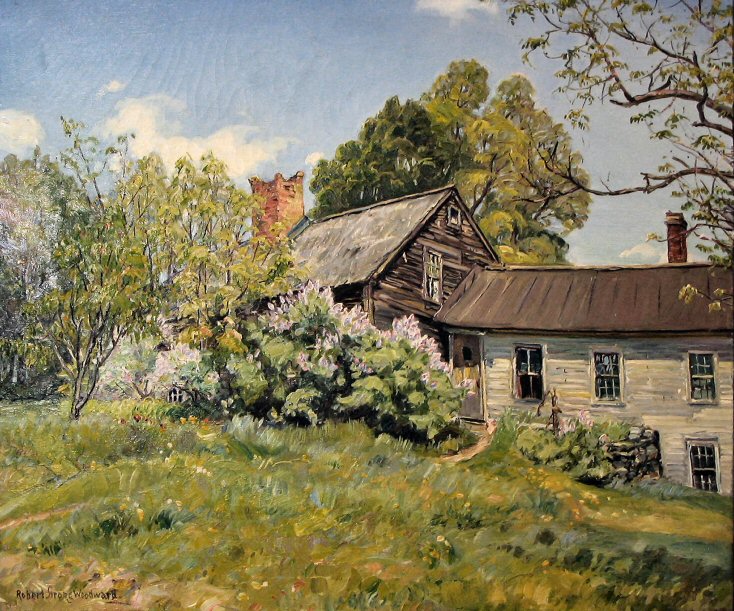
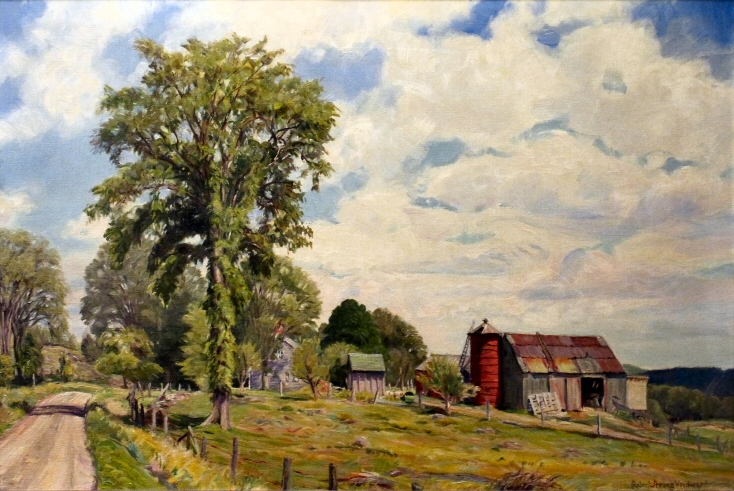
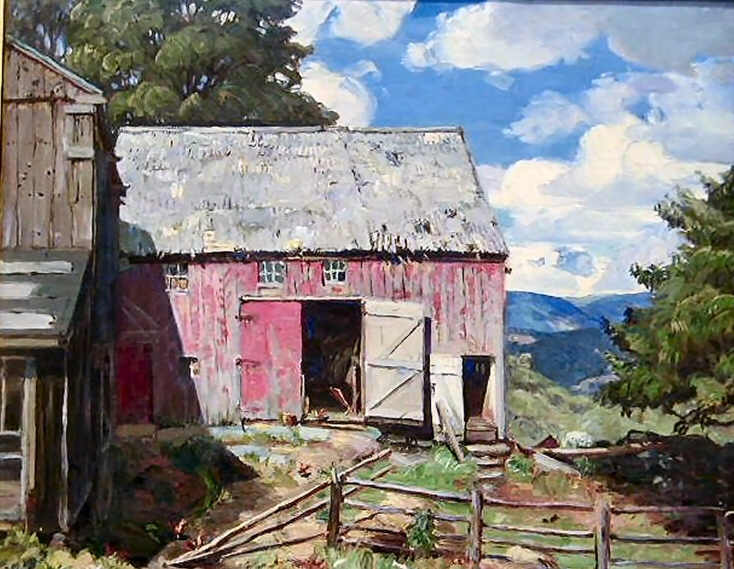
.png)
